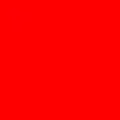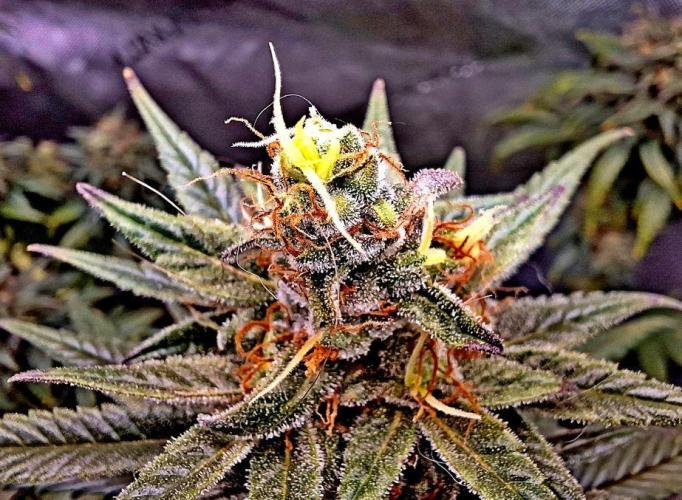The Grow Awards 2026 🏆 
























730nm used change photochrome help??
gottagrowsometimestarted grow question 3y ago
Hi guys. So has anyone got experience using far red 730nm to switching pfr to pr (photochrome)??
I'm looking for any general knowledge, tips and experience using. Also when can I push my fems to a 14-10 cycle, do they have to be out of pre flower before I can push it to that?
likes
Answer
NegotiatedBubbleanswered grow question 3y ago
An expensive spectroradiometer is not needed to achieve this this. Apogee has cheaper ePAR meters that can detect the 730nm wavelength now. I just got one and will be measuring the ratio in my light bar very soon.
likes
Complain
NegotiatedBubbleanswered grow question 3y ago
It comes down the to the ratio of Red photons to Far-Red photons(R:FR). This ratio matters much more than just the intensity of the far-red light alone. Normal daytime R:FR is 1.3:1 (1.3%) and is applied throughout veg. Sunrise and Sunset have an increase R:FR at about 0.6 (0.6%) for about 30 minutes each.
“The R:FR ratio of direct sunlight is about 1.3 during most of the day, but it approaches 0.6 or so during twilight when the atmosphere preferentially
scatters blue light and the sky turns yellow and red. This only lasts for half an hour or less, but it is important because plants use these changes to
synchronize their internal circadian clocks both with the 24-hour day and the seasons. This involves a burst of gene expression activity that is
controlled by phytochrome.”
“High-pressure sodium (HPS) lamps, on the other hand, have an R:FR ratio of about 4.8, metal halide lamps have R:FR ratios varying from 2.6 to 3.4
and white light LEDs (regardless of color temperature) have R:FR ratios varying from 3.6 to 4.0. Various fluorescent lamps have R:FR ratios varying
from 5.5 to 13.0 and above.”
“Far-Red Lighting and the Phytochromes”, Ian Ashdown, Maximum Yield,
www.maximumyield.com/far-red-lighting-and-the-phytochromes/2/17443
The University of Utah Crop Physiology Lab uses a R:FR that is lower than normal daytime ratios (1.5:1 or 1.5%) to minimize the effects of stem elongation in their experiments. Below is an example from one about phosphorus overfeeding vs harvest yields:
“The fraction of far-red photons (700 to 750 nm) was 1.5%. Because the far-red fraction was low, the classic PPFD and the ePPFD were within 1.5%
of each other”
"Sustainable Cannabis Nutrition: Elevated root-zone phosphorus significantly increases leachate P and does not improve yield or quality"
F. Mitchell Westmorelan, Bruce Bugbee, www.frontiersin.org/articles/10.3389/fpls.2022.1015652/full
2 likes
Complain
gottagrowsometimeanswered grow question 3y ago
This actually explains how you use far red to change the photochrone time and it gives you extra time to to have your plant under the light. Its proven. Anyways. Thanks for your reply
https://sprouthousesupply.com/product/hlg-flowering-initiator-far-red-bulb/
3 likes
Complain
gottagrowsometimeanswered grow question 3y ago
Do you understand my question?
You need 12hrs of darkness or 13. If you don't have a far red light. Which takes the 2hrs away needed to switch from pfr to pr. With a 730nm far red you use it and it takes 5 mins instead of 2hrs to put your plant to sleep. You need 2hrs without you for it to be fully asleep.
It explains it here better. It gives you an extended time so basically it's like a 26hr day if that makes sense. Your plants are getting a 1.50hr extra time aa it only takes 5-10m to put your plant to sleep if you use your far red to put to bed. So, I'm a bit lost in your response tbh.
3 likes
Complain
Sciolistic_Steveanswered grow question 3y ago
how much far red do you want in proportion to everything else? i'mnot sure..
14/10 will potentially be fine at any points. The general line in the sand for causing flower phase is 10 hous of uninterrupted darkness. It is not univesal, however. So, you may end up confusing a plant and causing a revege at some point.. no idea how often. 13/11 is safer... if you need to squeeze a little more DLI into a dayily cycle that'll give you 8% more than 12/12.
Relative to your environement, there's a maximum amount of light your plant can receive per day before it starts to become a hinderance. Daily Light Integral is best way to understand it because size of garden and hours of light are already part of how the value is calculated, so it is relative. 40 DLI in one gaden is 40DLI is every garden no matter the size or light cycle. it's simply counting moles of photons hitting the plant.
variation due to genetics in addition to temps, RH and CO2 levels, the last being the limiting factor in most contexts.
35-40DLI for ambient co2 is about as how as you can go... can push those boundaries but won't push far and may even need to dial back a hair.
50-60dli depending on environemental controls with 1200-1300ppm co2. tighter you contro temps and RH (specifically local to each and every leaf), you'll never be able to push 60+DLI without damaging plant.
So... are you not providign enough light on curent light schedule? that'd be the only reason to increase to 14/10 or 13/11...
try 14/10 at your own risk. might work but probably run into a plant or 2 eventualyl that re-veges...
and if you can do it 1-2 weeks after "flip" then you can do it at flip... it's a hormone response that requires a minimum amount of time of uninterrupted darkness.... if you want to give more, wait for last week or so of bloom and you can probably give 18/6 without consequences, but again... should be providing enough over 12/12 or 13/11 in the first place... or if shooting for maximum, already giving that uppwer tier relative to co2 levels.
3 likes
Complain
Similar Grow Questions
Solved

GreenGuerilla
Will the change from indoors to out trip my plants into flowering?Hi, Guys, I plan to move my plants outdoors next week. Will the change in the light schedule trip them from veg to flower? I really don't want this. They're currently @ 3 weeks on 18hrs indoors and outdoors they'll be getting 11hrs direct sunlight. Also, they're photo's not autos6y ago
6
6
Solved

KCduzit
When to flip into flower?currently midway through my 9th week of veg and am wondering when I should send plants into flower, should I double check sex first? (Feminized seeds) or wait until my screen fills out more? Plants are in 3 gallons pots and I worry that they might get rootbound if I veg Longer.
5y ago
2
2
Solved

Kratistos
Brown/white spotHi everyone. The plant is a photo on her 7th week of veg. I give solid ferti and diluted compost tea water then appeared white spot on old leaves and the new leaves have tips burnt.
Is it PH problem or PH mix with overfed?
Leaves. Edges burnt
Leaves. Other
Setup. Strains - Photoperiod
1y ago
1
1
Solved

Jesperado
Limit light in greenhouse to induce floweringWill the some limitation of light in the morning and evening help my PP plants going into their flowering phase?
We are currently having days lasting well over 17 hours in my region, so they need some help. I can't afford a blackout tarp, so I was wondering if this could work?
Week 11
Setup. Strains - Photoperiod
2y ago
3
2
Solved

slim3woods
experienced breeder/grower needed!!!I want to start my own cannabis line, I’m in search of a grower with experience who is willing to help me start. I have 4 sweet tooth seeds, 1 ice cream cake seed, and 13 others i don’t know the strains of, all bag seeds. Any one interested please contact me, you will be paid.Setup. Strains - Photoperiod
5y ago
2
3
Solved

eldruida_lamota
Feminizada o autoflorecientes?Me gustaría saber vuestra opinión, que prefieren cultivar en interior , autoflorecientes? O feminizadas ?
Estaría bien explicar un poco vuestra respuesta , 🙏
Setup. Strains - Photoperiod
Setup. Strain - Autoflowering
Setup. Seeds
3y ago
6
5
Solved

Shagrath
Hi everyone! This is my first grow and I have no clue how to estimate yield and when should I flip to flowering?
My tent is 2'x4' and the plants take abt 1,5'x2,5' now and I have total of 400W power from the CXB3590 leds.
Im aiming for quality but I want to use all the space.6y ago
7
1
Solved

Lazuli
Highest yielding indica ?What is the highest yielding indica u know ? Im looking for a strain that flowers in 7-9 weeks with massive yields thanks.Setup. Strains - Photoperiod
5y ago
1
1
Solved

buddhi_coop
Grow LightsIs it okay to use an LED Light 1000 watt (4x4x80" tent) & a UV Light 1000 Watt in a 4x4x80" grow tent for 3 plants. I want more light, I have plants growing slowly so I'm hoping to adjust the amount of light I have would speed up their growth. LED is white spectrum & UV blue-vegLeaves. Tips - Burnt
Setup. Strains - Photoperiod
Setup. Lighting
5y ago
4
3
Solved

versace_grow
Harvest time?Should I harvest? I always knew that darken of pistils is something to consider in harvesting but I have some buds with 10-15% of trichomes wich turned amber but all the pistils are white. Do you think it is time to harvest?
Other. Harvest - Curing
Setup. Strains - Photoperiod
6y ago
4
Solved

m0use
Stretch Q:Stretch estimated at 200%, is that of the entire plants length or just whats vertical in the top canopy?
I used some mainline, topping & lst techniques, not a lot of vertical growth for its age but a good amount of horizontal.
Curious to how it relates.
Thoughts, ideas?Week 11
Setup. Strains - Photoperiod
4y ago
4
2
Solved

Mooncat
When is to much Plants ?Pros/ Contras about cramming up to 16 diffrent Sativa Plants in 5Liter Pots into an 80x80 ?
Like a SoG without the perpetual nature of it since its a one time thing.
Defo and such will be hard but apart from that...
Lollipopping?Plant. Other
Setup. Strains - Photoperiod
Techniques. SoG
3y ago
4
4
Solved

GrOwl
Hermie / Bananas @ Banana?Hermie alarm??
Are these indications in the Buds Bananas (Hermaphrodites)??
The strain is Banana by Zamnesia at flowering day 40 / week 6
If so, how to proceed?
Get rid of the whole plant or just cut off affected buds and hope that no more bananas will show up??
Buds. Other
Setup. Strains - Photoperiod
3mo ago
1
1
Solved

Ananas_Comosus
I know genes matter but generally how big will photo-period cannabis get when grown Outdoors in the tropics during months when daylight is less than 12 hrsMy first grow was started in January when daylight was 11h20m. Those plants did not grow more than two feet and were harvested in April when daylight was 12h32m. My second grow was started in April and those grew to 3+ft and 4+ft. The 3ft was lost but the 4ft is still fattening.Setup. Strains - Photoperiod
3y ago
7
6
Solved

thelastopera
4/5 Seedlings have not sprouted after 1 weekGerminated 5 WW fem photoperiod from crop king and planted into Mo'koko coco coir substrate last week. So far only one has sprouted 2 days ago. The other 4 have no signed of sprouting. Are the seeds dead or did i do something wrong? Should i ask for refund on the 80% guarantee?
Setup. Strains - Photoperiod
Setup. Seeds
Setup. Seedling
6y ago
10
Solved

Growin_strong
Does anybody have any info on Punch 3.0? I can't find anything!Week 1
Setup. Strains - Photoperiod
6y ago
3
3
Solved

Ciujbau
Veg room - different plant stages under same light output - what you think ?for continuous grow (veg tent=TS1000/flo tent=TSW2000)So I've managed to get a 2nd tent for flowering and now I'm trying to get a continuous grow-like 2 plants every 2 weeks
In Veg tent,TS1000 at 100% output and around 50cm(~20 inches) - last photo
Trying to veg them for 4-6 weeks max and then into veg tent
Any tips?pics attached
Setup. Strains - Photoperiod
Setup. Lighting
4y ago
4
4








